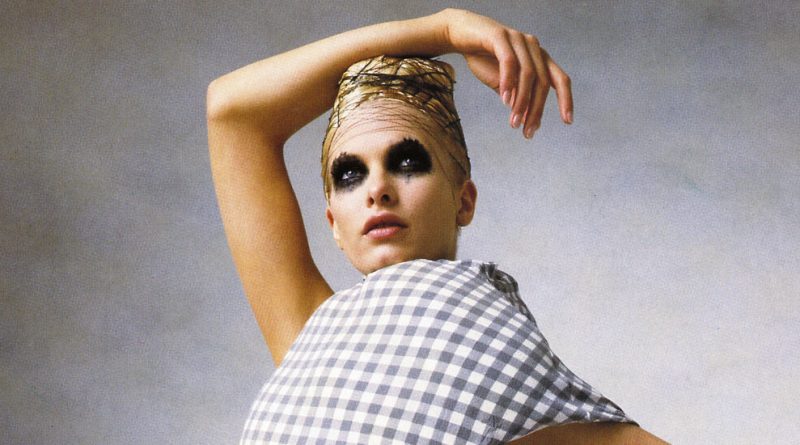Why 1997 Was Fashion’s ‘It’ Year
[ad_1]
PARIS — Was 1997 a watershed year for modern fashion? Next week, at the Palais Galliera museum, a new blockbuster exhibition will make the case that the year was both a high point of 1990s fashion — a current focus of nostalgia — and the gateway to the millennium.
With dozens of looks, the show “1997 Fashion Big Bang” charts some of the most seismic designer moves at French fashion houses; the revival of couture; and the collections that have become definitive reference points for the industry, including Comme des Garçons’ Body Meets Dress, Dress Meets Body and Stockman by Martin Margiela.
“Historically, big years for fashion have been hooked to a single event — think 1947 for the New Look by Christian Dior,” said Alexandre Samson, the exhibition’s curator. “But by our count, 1997 had 50 explosive moments, 38 of which are included in the show.”
Ahead of the opening on March 7, here are five events from 1997 that each had an impact on fashion — forever.
John Galliano Debuted at Dior
“Mr. Galliano’s show was a credit to himself, to Mr. Dior, whose name is on the door, and to the future of the art, which is always in question,” declared The New York Times critic Amy Spindler at the time, just part of a wider rapturous reception. It was a gilded curtain raiser to a 14-year tenure and one of the most spectacular rises — and eventual falls — in the business of fashion.
Couture Made a Comeback
For years, the couture business had been dwindling to the point of irrelevancy. But anticipation around the arrival of Mr. Galliano at Dior provoked such a buzz that other designers decided they should get in on the act. Big names like Jean Paul Gaultier and Thierry Mugler also got star billing on the January 1997 schedule — prompting, Mr. Samson said, a spike in press accreditation requests for the week of more than 30 percent. Paris was once again the epicenter of high fashion.
The Assassination of Gianni Versace
Gianni Versace was founder of one of the most flamboyant fashion empires of the 1980s and 1990s, a designer who combined clothes, color, supermodels and music in a way that produced a template for the future of the industry. His murder at the hands of a serial killer on the steps of his Miami home in July 1997 made front page news all over the world.
Mr. Versace had styled many of the world’s best-known women, including Diana, Princess of Wales, who appeared in Vanity Fair magazine that year wearing a dress from what would be his last collection. Six weeks later, she, too, would be dead, killed in a car crash just a short walk from the site of the new exhibition.
LVMH Celebrated its 10th Anniversary
1997 marked 10 years since the formation of Louis Vuitton Moët Hennessey — better known as LVMH — by Bernard Arnault, whom Forbes named the world’s richest man earlier this year but who then was relegated to No. 2 when Elon Musk recaptured the top spot. Nicknamed the “Wolf in Cashmere” for his ruthless approach to acquisitions, Mr. Arnault spent the 1990s steadily building what would eventually become the largest luxury goods group by sales, amassing brands like Givenchy, Celine and Loewe to add to a stable that already included Louis Vuitton and Dior.
He was also prepared to ruffle feathers outside the boardroom, appointing a string of young British and American designers to the top spots at prestigious French fashion houses, such as Mr. Galliano to Dior and Mr. McQueen to Givenchy, as well as Michael Kors to Celine, Narciso Rodriguez to Loewe and Marc Jacobs to Louis Vuitton (the trunk maker had never done clothes before).
The Arrival of the ‘It’ Bag, Thanks to the Fendi Baguette
The 1990s saw the birth of the “It” bag phenomenon, in which handbags from top fashion brands — with price tags that could be confused with ZIP codes — became a cornerstone of the global luxury business thanks to their chunky profit margins.
Arguably, the GOAT was the Fendi Baguette, the loaf-shaped purse created in 1997 that celebrated its 25th anniversary with much fanfare last year.
Famously beloved by the character Carrie in “Sex and the City” (the pilot of which was filmed in, you guessed it, 1997), the Baguette came in both mainline and limited editions, forcing customers to join long waiting lists or to stand in store lines. By 2017, the exhibition’s show notes said, Fendi had sold more than a million of them.
“1997 Fashion Big Bang” is scheduled from March 7 to July 16 at the Palais Galliera in Paris.
